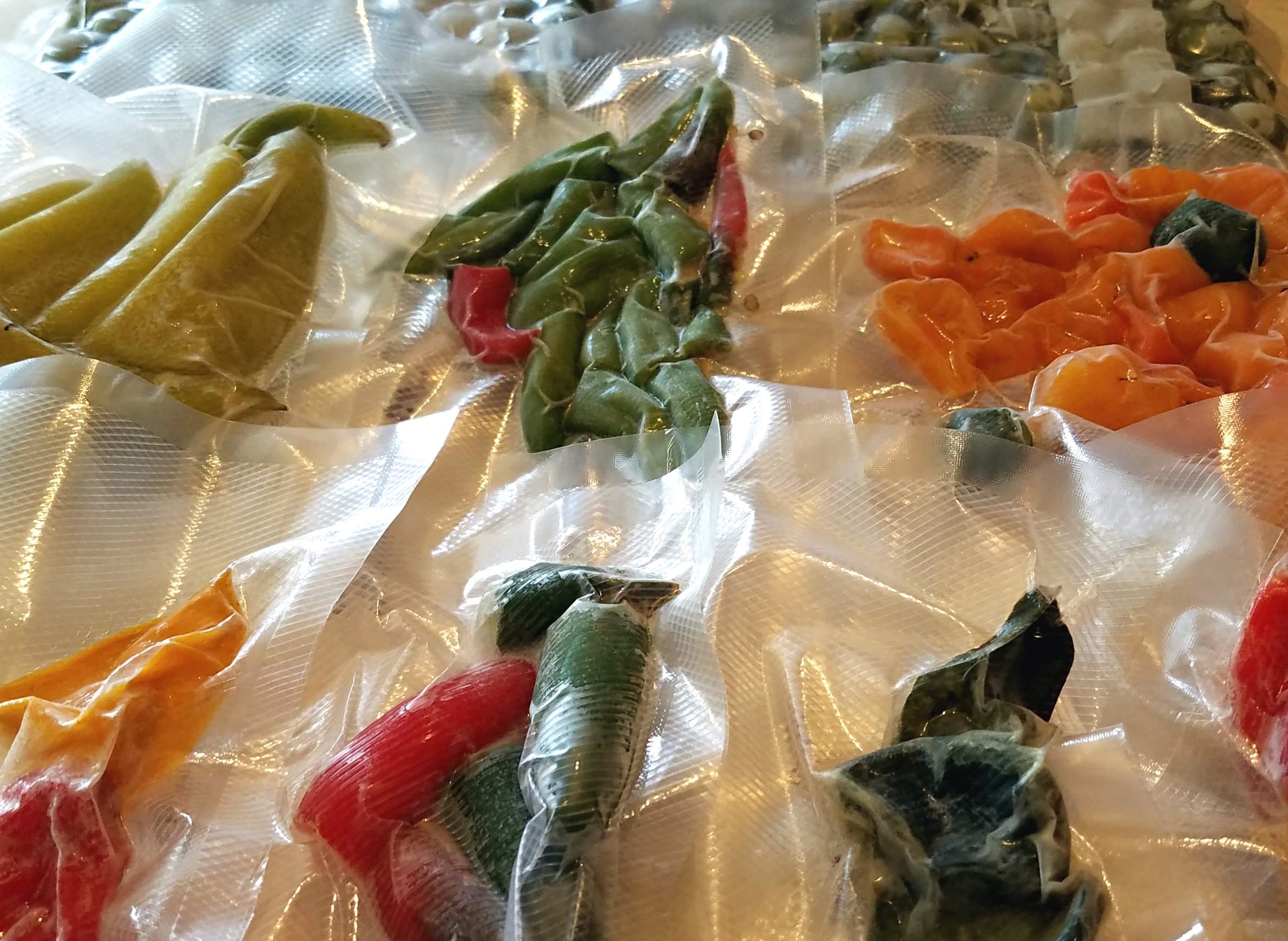
Preserving Fresh Produce With The Simplicity Of Cold Storage

The peak of summer is a time when gardeners start turning their minds to preserving all the goodness they grow for the cold winter months that are all too soon ahead. Storing a garden's harvest doesn't have to involve toiling over a pressure canner on a hot day, though.
Megan Cain, the founder and CEO of The Creative Vegetable Gardener, shared her preservation methods in a February 11, 2017 talk at the Wisconsin Garden Expo, recorded for Wisconsin Public Television's University Place. The key, she said, is to store only what will be eaten during the year.
"It's a waste of time and energy and money if you're putting away lots of things that just languish at the bottom of your freezer for five years and then you end up composting it," she said.
Cain started gardening as an adult after she moved from San Francisco to a tiny community in northeast Missouri, before making her way to Madison. She learned to preserve food by canning, but didn’t really enjoy doing it.
"I started to realize there has to be easier ways to put away food," she said. "I shouldn't have to can everything."
These days, Cain only cans salsa. Everything else goes in the freezer, the refrigerator or into cool, dry storage.
"I like simple and elegant solutions with food preserving," she said. "I always try the most simple thing first, and if that doesn't work, I try the next most complicated thing."
Keeping records is key to effective preservation. One simple method Cain recommends is to tape a piece of paper and a pen near the freezer and make a note each time something is added. Over time, it takes the guesswork out of how much of a certain crop to plant or buy.
"It's kind of fun to figure out how much you use of something so you can grow it or buy it so that you only use your own all year," she said.
Key facts
- Successful preservation requires strategic thinking. If gardeners consider which vegetables taste best when eaten in season and budget money spent on most frequently purchased produce throughout the year, it can help guide decision making when it comes to preserving.
- It's helpful to make a priority list by choosing three to five items and focusing on preserving those first.
- All fruits and many vegetables, including eggplant, beans and greens such as kale, chard and collards, may be frozen raw. When steaming or blanching such vegetables, it's important to be careful not to overcook them.
- Some vegetables, such as potatoes, sweet potatoes, butternut squash and garlic, may be kept fresh in a cool, dry place. Most herbs are best dried, including marjoram, mint, oregano, sage, tarragon and thyme.
- Vegetables such as carrots and beets can be kept in the garden until the ground freezes. (In case of garden flooding, however, gardeners are advised to take extra precautions because of potential contamination.) After harvest, vegetables are best dried overnight on newspaper before bagging for storage in a refrigerator. Vegetables should not be washed before being stored.
- Produce should be purchased at peak season when prices are lowest. It can be less expensive to buy at a farmers' market or berry farm than to grow items such as tomatoes, squash or blueberries at home.
- Cain is the author of several books including Super Easy Food Preserving and Smart Start Garden Planner: Your Step-by-Step Guide to a Successful Season, aimed at novice gardeners. Along with teaching and writing, she also moderates a Facebook group for gardeners.
Key quotes
- On planning a garden: "If you really like the idea of food preserving, you can reverse engineer back to February when it's time to buy seeds and it's time start plants, and do those things with food preserving in mind. So when you're looking through the seed catalogs, look for varieties that are good for preserving."
- On knowing when to stop stockpiling: "I have kept track of how much pesto I put away each year. And we don't use more than 12 to 15 pestos. We give some away. We use some throughout the year. So even if I have basil still in my garden, when I get to 15 pestos in the freezer, I just stop. If we're not going to eat it, then it's not worth it. And you can carry things over year to year, but I've found that some of the quality kind of degrades over time, so I try to eat everything as quick as possible, really."
- On farmers' markets: "I'm a big gardener, but I still go to the farmers market and buy things maybe that I didn't grow, like blueberries or strawberries or cantaloupe. And one time I thought, 'Why don't I buy things for preserving?' Then all of a sudden I thought, 'That's a great idea!' You don't have to grow everything you preserve."
- On building community through gardening: "I like to learn and teach in community, because I think when you learn about gardening in a community, like all of us together here, you make less mistakes and have more fun."
- On gardening and preserving: "Gardening is a lot of work. It's a lot of joyful work, for sure, but it's still hours and time and money invested. I really feel like I'm getting my money's worth, the most for my labor and my time and my money because I'm continuing to eat from my garden all year round."


